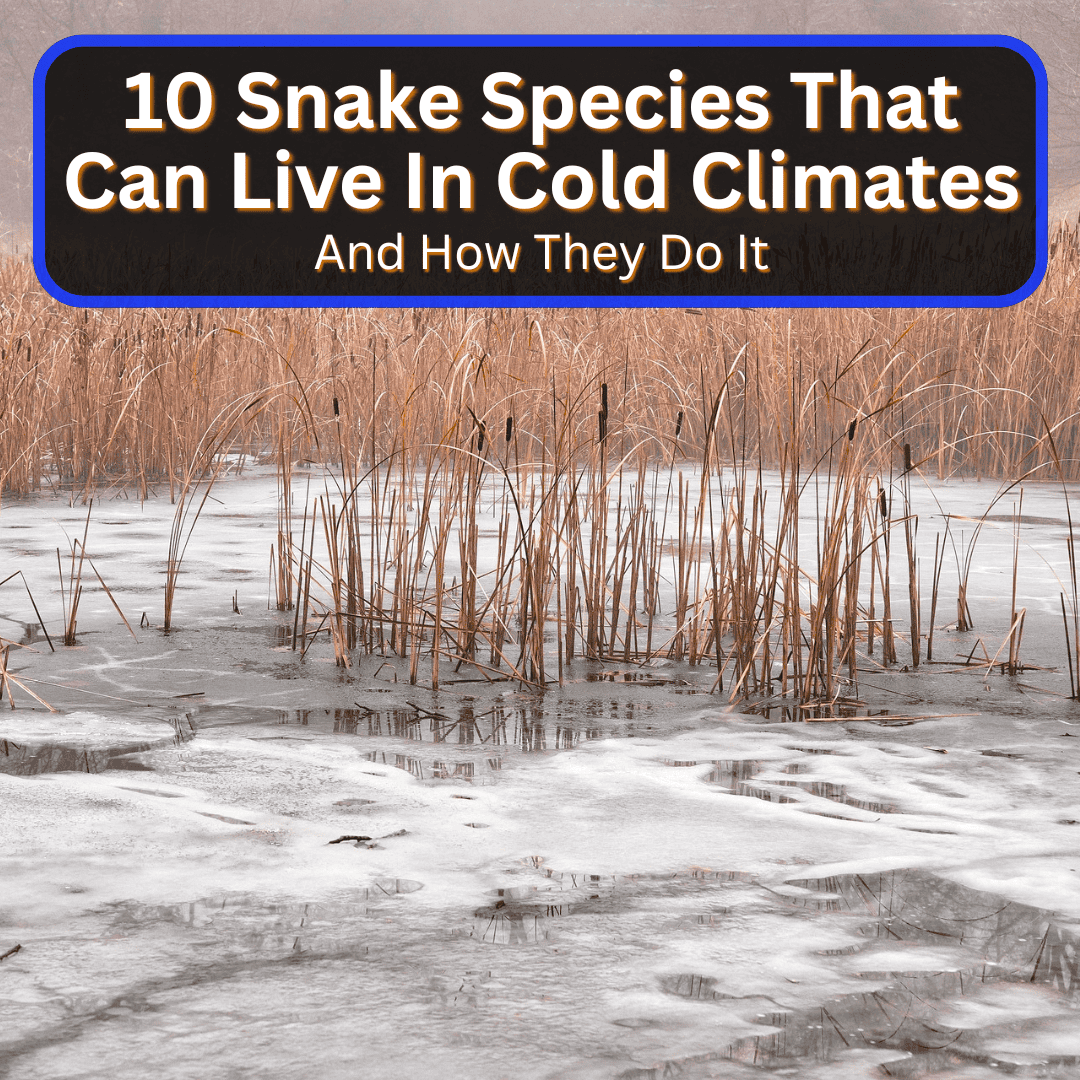
Snakes are cold-blooded, so that makes sense.
They need heat from their surroundings to stay active.
Nevertheless, plenty of snake species have figured out how to survive in cold climates.
They have developed clever ways to make it through cold winters, even in places with harsh winters and snow. These tough reptiles use different tricks to get by.
They might hide underground, slow down their bodies, or even huddle up with other snakes for warmth.
You’ll find cold-weather snakes all over North America and Europe, living where winter temperatures drop well below freezing.
Snake Species That Can Live In Cold Climates
All of the following snakes have adapted to survive in cold climates. And the first one has managed to thrive in colder habitats than any other species.
1. Common European Adder
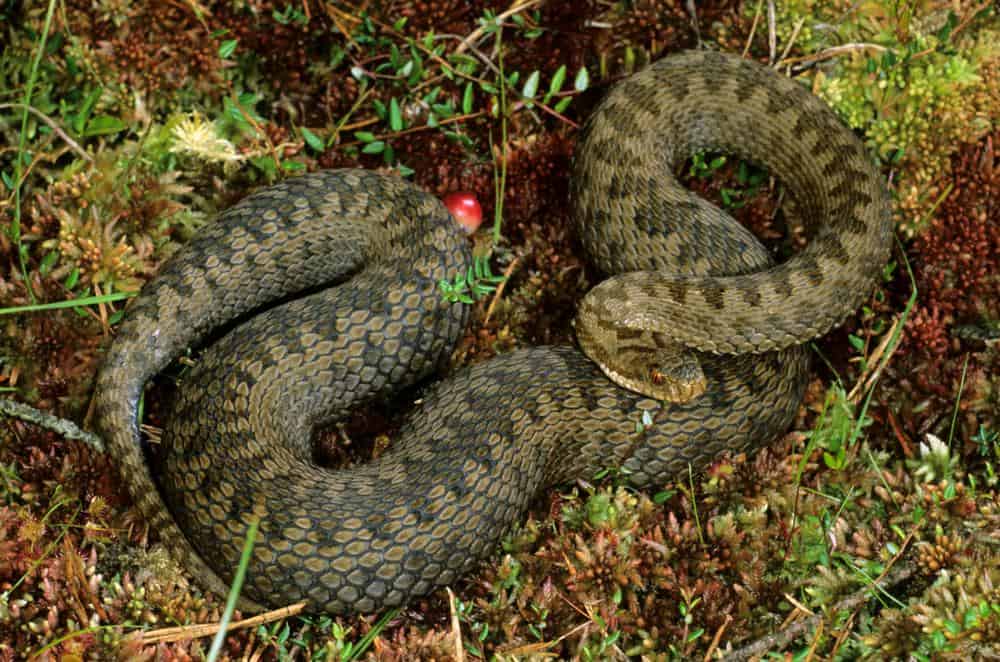
The Common European Adder pops up in more cold places than any other snake. It actually lives farther north than any other snake species. This snake can survive inside the Arctic Circle. It’s the only snake you’ll find up there, above that frigid line.
Look for the zigzag pattern on its back. Some folks call it Vipera berus or the black adder.
This one’s venomous, so it’s smart to keep your distance. It’s actually the most common venomous snake in Europe.
Ever wonder how a cold-blooded animal survives freezing temperatures? The adder hibernates during the roughest months to get by. When winter hits, these snakes find safe spots underground or under rocks. They basically sleep through the worst of it and wake up when things warm up.
Unlike most snakes, the adder gives birth to live young instead of laying eggs. That way, the babies don’t have to deal with eggs freezing in the cold. You’ll find these resilient snakes all over Europe and parts of Asia. They’ve figured out how to live where most other snakes just can’t.
2. Common Garter Snake
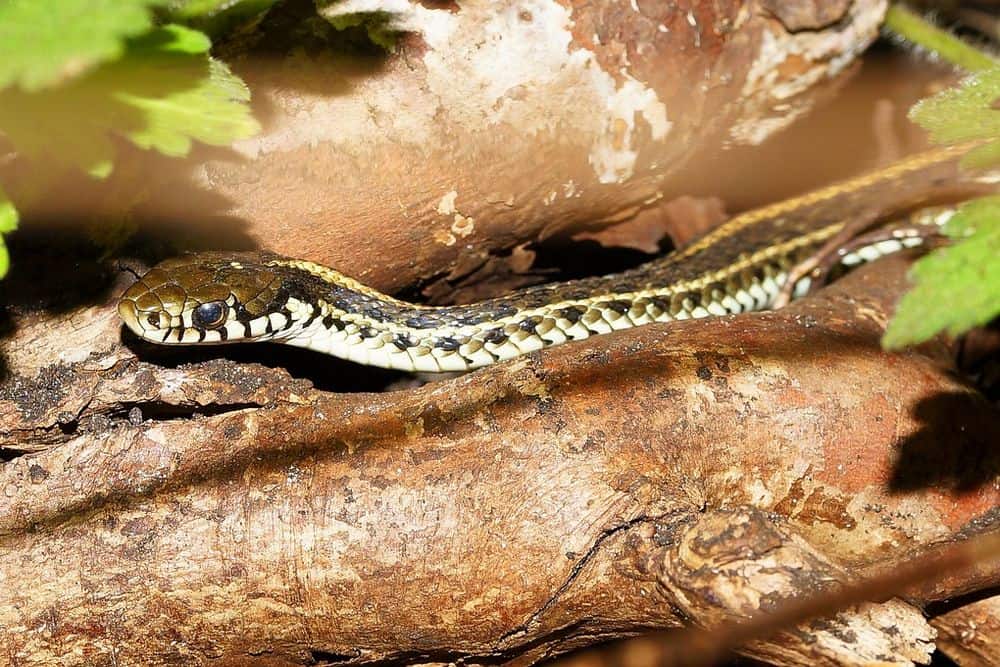
Common garter snakes live across most of North America, from southern Canada down into Mexico. They handle cold weather better than most reptiles. You’ll spot them by the bright stripes running the length of their bodies.
Garter snakes keep growing their whole lives. Wild ones usually last around 4 to 10 years, but in captivity, they can make it to 20. You might see these snakes in your backyard or garden. They’re probably the most common snake you’ll find around homes in America.
Like a few others on this list, garter snakes give birth to live babies. That’s a big help in places with short summers and chilly winters.
They’re active during the day and hibernate in winter to survive the cold. They don’t do well in super hot deserts or the most frigid areas, but they’re pretty adaptable elsewhere across the continent. That is why they are one of the most common species of snake to encounter on your property.
3. Massasauga Rattlesnake
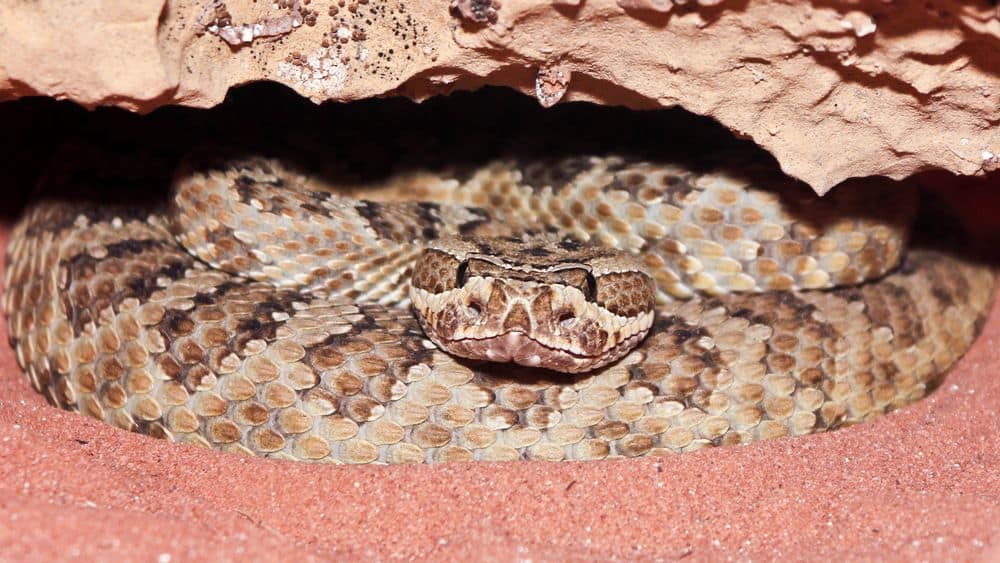
The massasauga rattlesnake lives in cold spots across the Midwest and parts of Canada. You’ll find them from Ontario down to Michigan and Wisconsin.
These snakes are shorter than most rattlers, usually about 20 to 28 inches long. Their bodies are thick, with small rattles at the end of their tails.
Massasaugas deal with cold by hibernating in dens through the winter. They hide in rock cracks or underground burrows to stay safe.
Their coloring helps them blend in—usually gray or brown with dark, butterfly-shaped spots down their backs.
They like wet places, so you’ll spot them around marshes, wet meadows, and prairies. But they also turn up in forests and grasslands.
Instead of laying eggs, the female carries them inside for about three months and then gives birth to live babies.
If you bump into one, listen for the rattling sound. It’s just a warning—they only bite if they feel threatened or cornered.
4. Prairie Rattlesnake
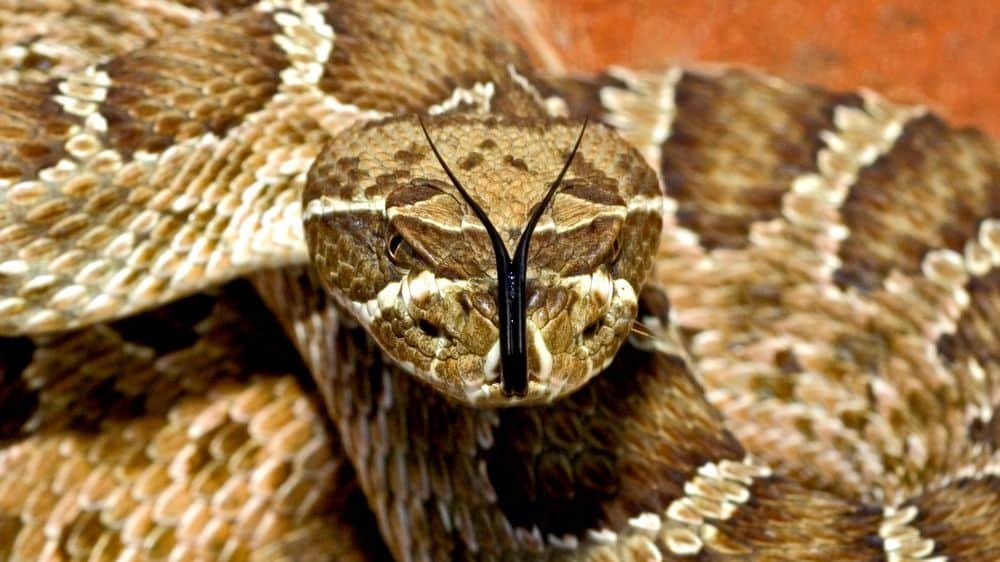
Prairie rattlesnakes live in cold regions across the western U.S. and Canada—think North Dakota, Wyoming, and even parts of Alberta and Saskatchewan.
They handle cold weather by finding warm spots during the day, and when it gets really chilly, they gather in caves or rock crevices with other snakes to keep warm through winter.
These snakes can live at high elevations, too. In Wyoming, they survive at over 9,000 feet, where it gets seriously cold.
They can grow up to 5 feet long. Look for triangular heads and dark patches that turn into rings near their tails.
During cold weather, prairie rattlesnakes are out during the day when the sun’s up. They hunt small animals like ground squirrels, mice, and prairie dogs.
They return to the same winter dens every year, often sharing the spot with lots of other snakes to make it through the harsh months.
5. Smooth Earth Snake
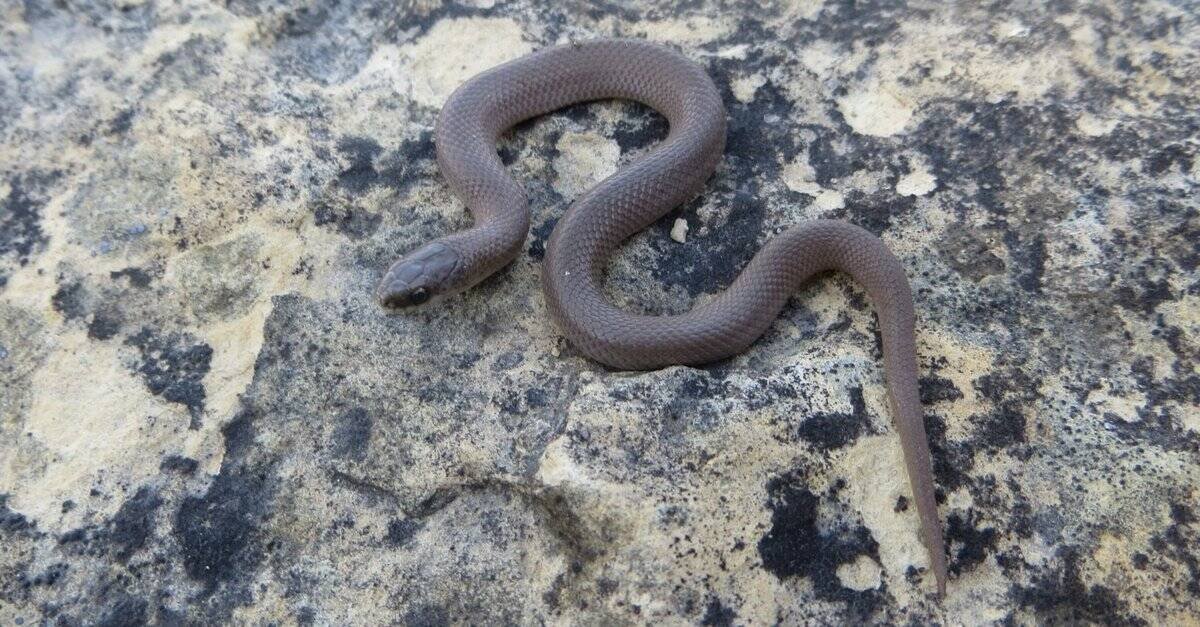
The smooth earth snake doesn’t get much attention, but it’s a tough little reptile. This small snake can handle colder weather better than many others.
It lives in the eastern U.S., mostly in forests with plenty of leaf litter and ground cover.
These snakes are fossorial, meaning they spend most of their time underground. You probably won’t see them much—they stay buried in loose soil or under logs and leaves.
When it gets cold, they dig even deeper to avoid freezing temperatures that would harm other snakes.
They’re harmless—nonvenomous and small. They mostly eat earthworms and soft insects.
If you live where they do, you might have them in your yard and never know it. Their brown or gray coloring blends right in with dirt and dead leaves.
In spring, smooth earth snakes come closer to the surface as things warm up. They’re definitely one of the more cold-hardy snakes in North America.
6. Dekay’s Brown Snake
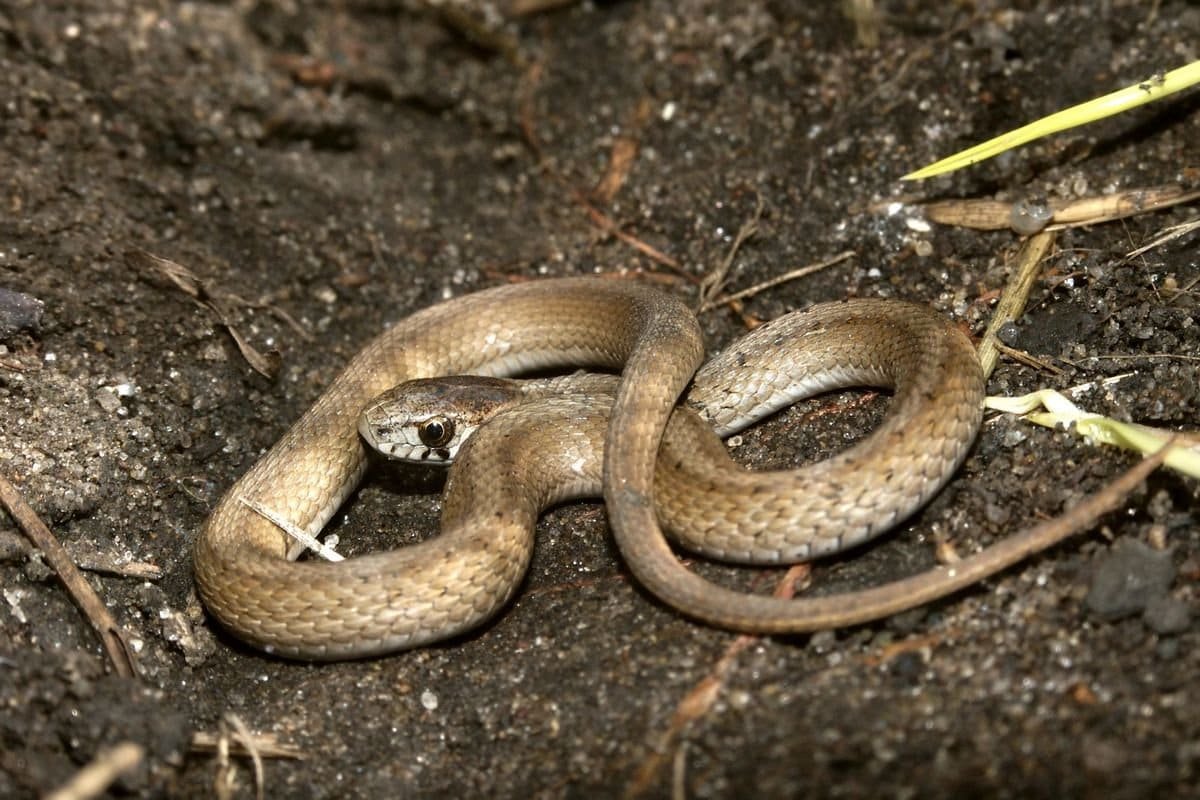
Dekay’s brown snake is pretty widespread—you’ll find it from southern Canada all the way down to Central America. When first born, they’re only about 4 inches long.
They handle cold by going into brumation, a state that helps them survive when temperatures drop in late fall and winter.
You’ll usually find them hiding under rocks, logs, or other cover during cold months. Sometimes, big groups hibernate together to stay warm.
On mild winter days, you might catch them out during daylight. When it’s warmer, they switch to being more active at night.
They live in all kinds of places—forests, marshes, and even drier prairies. They’re pretty secretive and hard to spot. They like moist areas but can adapt to a bunch of different climates.
7. Smooth Green Snake
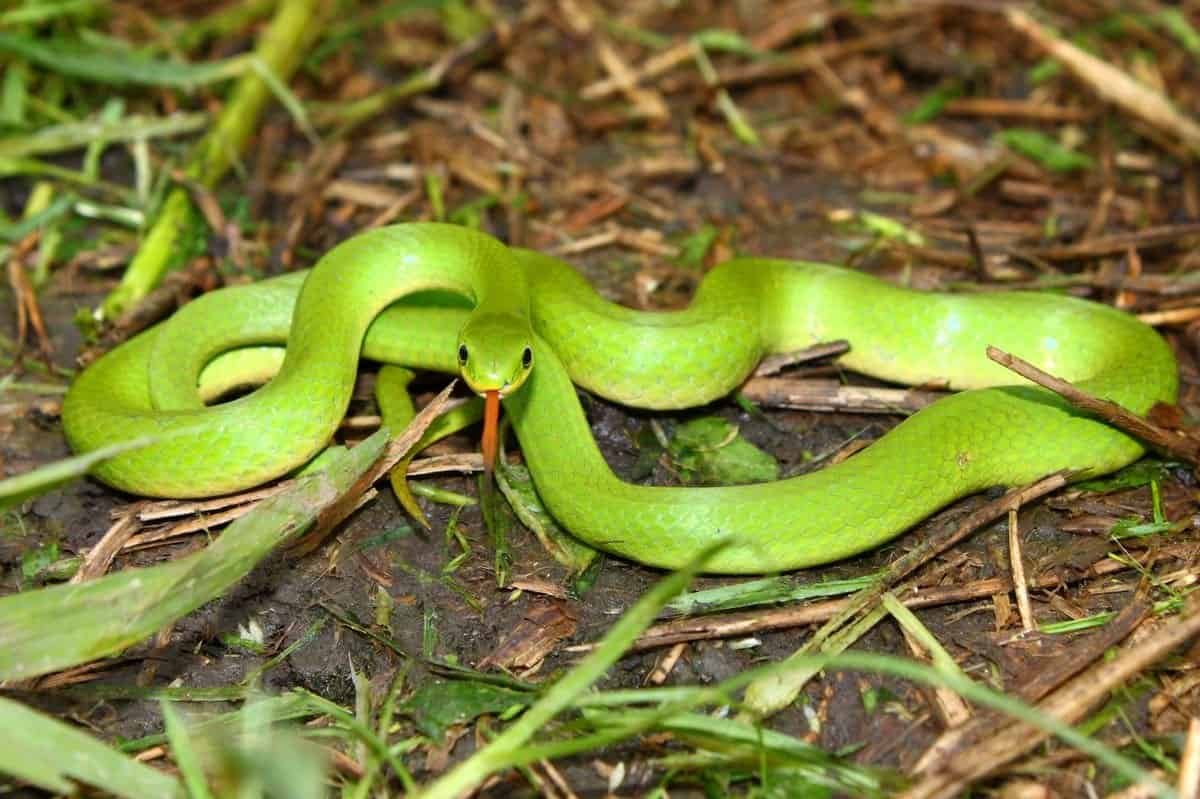
Some call it the grass snake, but the smooth green snake stands out for its bright green color and smooth scales. They’re small, usually between 12 and 20 inches long. You’ll see a solid green on top and a white or yellowish belly.
These snakes live in North America’s open fields and wetlands, preferring moist places where they can hunt insects and spiders. When winter shows up, they go below the frost line, often sharing spots with other snakes in ant mounds or similar shelters.
In warm months, they’re active day and night, using quick strikes to catch prey instead of squeezing it.
If you ever find a dead smooth green snake, you’ll notice its color fades from green to pale blue. Kind of odd, right? Habitat loss has been rough on them. As farms turn into neighborhoods, they keep losing safe places to live.
8. Eastern Hognose Snake
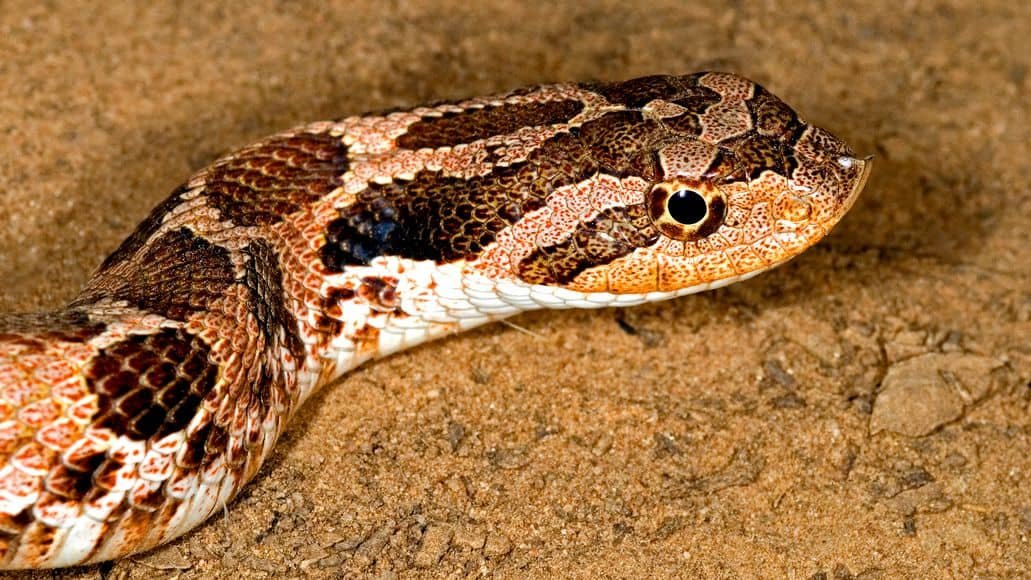
The Eastern hognose snake is found across much of North America and handles cold well by going into brumation in winter. They’re active from April through September, coming out of winter rest when spring temperatures rise.
In northern areas, these snakes start brumation earlier—usually late September or October. Southern ones stay active longer into fall.
During cold months, Eastern hognose snakes take shelter in animal dens or old burrows. Brumation is similar to hibernation, just for reptiles. It lets them get through freezing winters.
You’ll see them in woodlands, farmlands, and sandy spots. They live in a range of climates.
They’re rear-fanged but not dangerous to people. Their venom’s too weak to hurt humans. They’re actually famous for playing dead when threatened—pretty dramatic, honestly.
They adapt well to different temperatures. Brumation really helps them thrive in colder climates where others might not make it.
9. Northern Watersnake
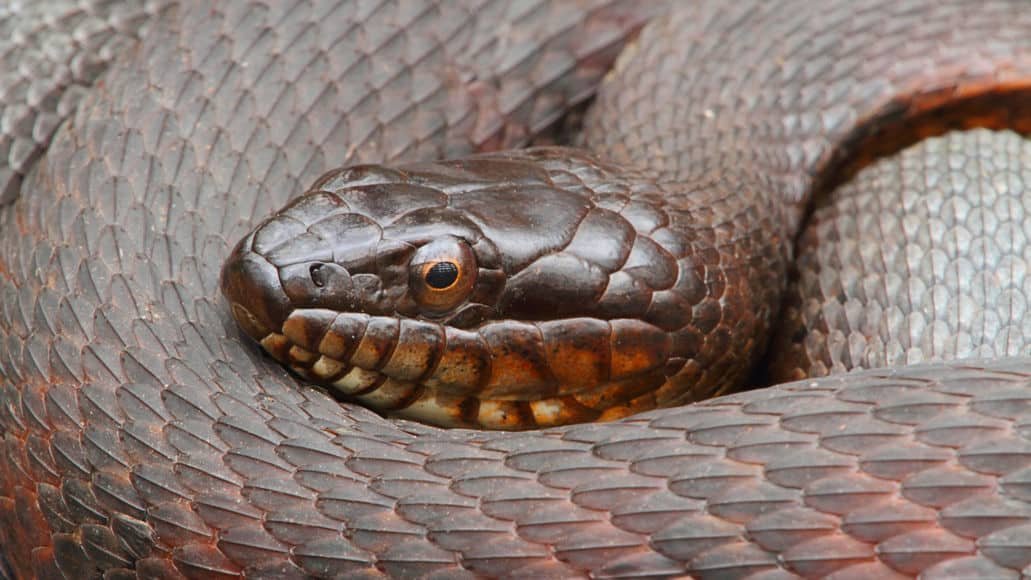
Northern watersnakes turn up all over much of North America and handle cooler temperatures better than a lot of other snakes.
They live in areas with cold winters and stick close to rivers, lakes, and swamps, especially in northern states. They’re thick-bodied, and their coloring can vary—brown, gray, or reddish patterns are common.
When winter arrives, they hibernate under rocks or in burrows until spring. If you see one while fishing or hiking, don’t worry. Northern watersnakes aren’t venomous and won’t bother you.
They give birth to live babies, which helps the young survive in colder places where eggs might freeze. They eat fish, frogs, and other critters that live in or near water. On warmer days, you’ll often see them basking on rocks by the water.
10. Rubber Boa
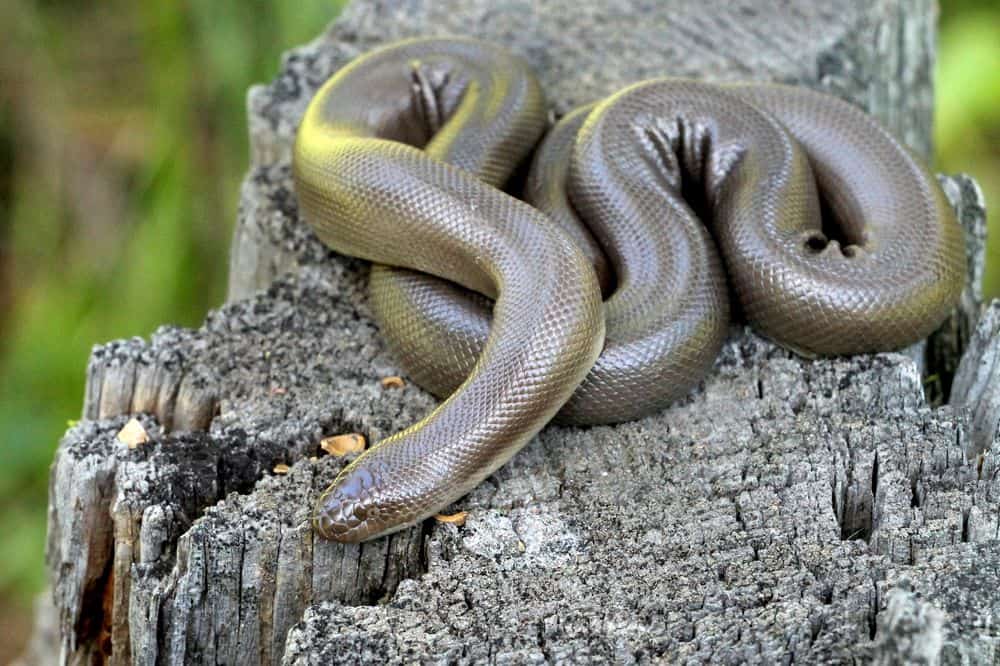
The rubber boa is one of the most cold-tolerant snakes in North America. It can live in places where most snakes just can’t manage. Its name comes from its shiny, rubbery-looking skin. Sometimes you’ll even spot one slithering through snow or trying to burrow into it.
These snakes live in all sorts of places—grasslands, forests, and even high mountains up to 10,000 feet above sea level. Unlike most snakes, rubber boas prefer cooler temperatures and actually get uncomfortable if it’s too hot outside.
You’ll often find them hiding under rocks, logs, or in underground burrows, spending most of their time in these cool, protected spots. They’re surprisingly versatile: they can swim, climb trees, and dig burrows quite well.
The rubber boa is one of only two boa species in North America. It’s also the most northern-living boa species anywhere in the world.
How Snakes Survive In Cold Climates
Snakes that live in cold places rely on body changes and behaviors to get through freezing temperatures. They enter a sleep-like state called brumation and look for safe underground shelters to ride out the winter.
Physiological Adaptations
Your body temperature stays the same in cold weather, but snakes can’t do this. Cold-climate snakes have special body features that help them survive low temperatures.
When it gets cold, these snakes slow down their heart rate and breathing. That way, they burn less energy during the winter. It’s a clever trick, honestly.
Antifreeze proteins in their blood keep ice crystals from forming inside their bodies. Some species can handle temperatures as low as -57°F. That’s wild, right?
Cold-adapted snakes have thicker skin and more body fat than their warm-climate cousins. This extra insulation keeps them warmer for longer.
Their kidneys work in a different way too. They process waste more slowly, saving precious energy when food is scarce.
Some species skip the whole egg-laying thing and give birth to live babies instead. Viviparous snakes do better in cold climates since eggs could freeze and die underground.
Behavioral Strategies
Snakes use smart behaviors to stay warm and safe during cold months. They look for the best spots to hide from freezing temperatures.
Most cold-climate snakes head underground before winter hits. They squeeze into burrows, rock cracks, or spaces under tree roots—anywhere that’s warmer than the surface.
Group behavior is common in cold areas. Many snakes gather together in the same winter shelter. This way, they can share body heat and stay warmer.
You might find dozens of garter snakes in one den during winter, all tangled up in a big pile to create warmth. They choose winter homes carefully, picking spots below the frost line where it’s still above freezing.
Some use old animal burrows or natural caves. Others dig into soft soil or wedge themselves under big rocks that block the wind.
Brumation Versus Hibernation
Snakes don’t actually hibernate like bears. Instead, they enter a state called brumation, which works a bit differently.
During brumation, snakes get very inactive but don’t sleep deeply. If there’s a warm day, they might wake up to drink water or move to a better spot. Seems practical.
Hibernation means an animal’s body temperature drops very low and they can’t wake up easily. Brumation just slows snakes down, but they still keep some control.
Brumating snakes won’t eat, but they might drink water if they find it. Their breathing and heart rate slow way down to save energy.
The length of brumation really depends on the climate. In very cold places, snakes might brumate for 6-8 months. In milder spots, maybe just 2-3 months.
Some snakes brumate alone, others in groups. Group brumation helps them stay warmer and safer from predators during winter.
Habitat Preferences And Range Expansion
Cold-hardy snakes have adapted to live in environments that offer both thermal refuges and seasonal survival opportunities. Climate change and natural expansion patterns are pushing these species into new territories across northern regions.
Typical Environments For Cold-Hardy Snakes
You’ll find cold-adapted snakes in places with good winter shelter and sunny summer basking spots. They like areas with rocky outcrops, fallen logs, and underground burrows.
- Rocky terrain is usually their first choice. Rocks soak up heat during the day and offer insulated spaces below ground. Garter snakes often gather in big groups under rock piles when it’s cold.
- Forest edges and meadows are also great. You’ll see these snakes warming up in sunny clearings but staying close to shade. The mix of plants makes for good hunting, too.
- Wetland margins attract ribbon snakes and water snakes. These spots stay a bit warmer because water holds heat longer. Plus, amphibian prey hangs out near the water.
Underground dens matter a lot when it’s freezing. Some species travel miles to reach communal hibernation sites called hibernacula. These underground chambers stay above freezing through winter.
Geographical Distribution Shifts
Your local snake populations might be changing as cold-hardy species move north. Rising temperatures let these reptiles survive in places that used to be too cold.
- The Arctic Circle is seeing more snake activity than before. The European adder now shows up further north in Scandinavia. Winters that used to kill them now let them survive. That’s a big shift.
- Canadian populations are moving into new zones, too. Common garter snakes now live in parts of northern Canada where they couldn’t survive 50 years ago. These changes happen slowly, over generations.
- Mountain elevations show the same trend. You’ll spot snakes at higher altitudes where cold used to keep them out. This vertical move matches their push northward.
- Hibernation patterns are shifting as well. Some populations now spend less time in winter dormancy. Earlier spring wake-ups and later fall activity mean longer active seasons.
Humans create new micro-habitats that snakes can use. Roads, buildings, and cleared land give them extra basking spots and places to hide from the cold.
Conclusion
Turns out, snakes can handle cold places better than you’d think. These 11 species? They’re honestly nature’s little surprises.
Cold-weather snakes have their own tricks for making it work, like:
- Finding cozy spots underground
- Slowing down how their bodies run
- Bulking up a bit to hold onto warmth
Some even freeze up and thaw out when spring rolls in. Wild, isn’t it?
Garter snakes might just be the champs at surviving the cold. You can spot them in places like Alaska—places you’d never expect snakes to pop up.
These snakes show that cold-blooded doesn’t always mean you’re stuck in the tropics. They just have to get creative.
If you’re in a chilly area, you might bump into one of these snakes in your yard. No need to panic—they’re usually pretty harmless and actually help keep pests in check.
Just to recap:
- Cold-climate snakes tend to be a bit bigger than their warm-weather cousins
- They spend winter tucked away underground
- They slow down a lot when it’s cold
- Most wake up and get moving again in spring
Scientists are still piecing together how these snakes pull it off. There’s always something new to discover about these hardy little survivors.
So, next time you spot a snake in the cold, maybe tip your hat—it’s probably one of these clever species that figured out how to outsmart the chill.
Leave a Reply